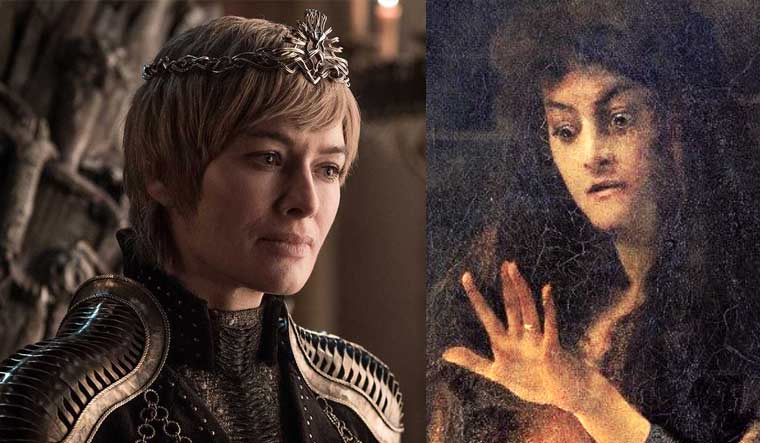Shakespeare’s influence on television’s bloodiest show is well known. Whether it is the intrigue, the layered characters or the political underpinnings, the Bard would have had much to say (and eloquently) if he could have taken a peek at the script for Game of Thrones.
While character-to-character comparisons are not always possible, one pairing that does justice to the respective source material is that of Cersei Lannister and Lady Macbeth.
Cersei, the former queen of the seven kingdoms and the eternal queen of smirks and sassy dialogues, is perhaps Game of Throne’s most enjoyable villain. She marries malice with ambition, courage with resilience, and the ability to make her lovers do horrible things with a sensuality that makes her lovers want to keep doing horrible things if it means that they can stay with her.
Lady Macbeth, a character who was written centuries ago by William Shakespeare, possesses many of these same traits. Both women fulfil the trope of the power-hungry woman who employs violence to meet her needs many centuries. Cersei Lannister and Lady Macbeth are two powerful heroines whose lust for power made them antagonists.
Do they have more in common than meets the eye? Here are some of the themes that unite the characters (spoilers ahead).
Lust for Power
Shakespeare introduces Lady Macbeth with a scene where she plots King Duncan’s murder. Her ambition is far greater than that of her husband, Macbeth, who she goads into committing regicide.
Similarly, Cersei orchestrates the rise of her children to power, willing to kill (or have her husband kill) anybody who could threaten this,
Cersei and Lady Macbeth’s similarities come from their innate lust for power. Both of them live in medieval worlds, where a woman’s need to come into power can be easily associated with her need to be heard. In a world where all bets are on the male heir (competent or otherwise) and where women must marry into the patriarchy if they want a seat at the high table, we can see where Cersei’s liking for power comes from.
Provoking masculinity to plot murder
Lady Macbeth and Cersei Lannister are skilled at getting others to do their dirty work for them. One technique they use to do so is to attack the masculinity of their men when they are hesitant about committing evil acts.
Lady Macbeth ushers Macbeth into action by accusing him of being full with the ‘milk of human kindness’ and thus not being masculine enough to commit the deed. She sweetens the attack by dangling the prospect of him winning better position and power in the Kingdom.
Cersei does the same in multitudinous way and occasions, initially with Robert and then mostly with Jaime Lannister. While trying to goad King Robert against Ned Stark, she tells him “I should wear the armour and you the gown.”
Madness
Unfortunately, for both the characters, violence led to a descent into madness. For Lady Macbeth, the aftermath of killing King Duncan — a father-like figure to her — drove her to madness as a result of the guilt which consumed her. Lady Macbeth’s critically acclaimed sleepwalking scene is an adieu to her madness. On the other hand, walking made Cersei even more ruthless, as she was consumed by a need for revenge following her walk of shame.
While Lady Macbeth is consumed by guilt, Cersei is consumed by power and pride. Lady Macbeth’s disillusion that all the perfumes of Arabia cannot sweeten her little hand is equivalent to Cersei’s belief that all of the enemy’s forces inclusive of dragons cannot rip apart her reign. This would likely explain her refusal to surrender in the final episode, even while the bells of surrender rang out and the Red Keep was burning down along with the city.
The defenceless end
As devious as these women were, they were quite helpless in the end. Lady Macbeth dies of her own ‘self and violent hands’ while Cersei is crushed to earth in the one place she always deemed to be safe — her familial possession, the Red Keep. Cersei’s death was as poetic as it could be, dying in the hands of a loved one with whom she came into the world. The case was different for Lady Macbeth, whose death was never explicitly showcased. Yet, madness confines the characters to helplessness, an inability to climb out of the very hole of violence that they themselves dug.
The final episode of the show ushered in contradictory reactions; some loved it while some criticised it. Cersei’s death was, unfortunately, more poetic that dramatic, thereby handing an aggressive character a rather disappointing passive death.


